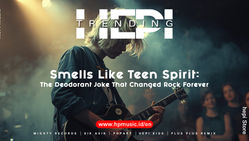The Illusion of Going Viral | Why Most Artists Fade After One Hit
- HP Music
- 2 days ago
- 3 min read

Every artist dreams of that moment — the sound that explodes overnight.
A million plays. A sea of comments. Validation, finally.
But what happens after the fireworks fade?
Most creators vanish into silence. Not because they weren’t good enough — but because they misunderstood what going viral really means.
The Viral Mirage
In 2024, more than 29,000 artists reached between 1 million and 10 million on-demand streams (Music Business Worldwide).
Yet, less than 3 percent of them managed to repeat that success.
That’s not a failure of talent — it’s a failure of system design.
The modern algorithm rewards novelty, not consistency.
It wants you to be surprising, not sustainable.
It rewards the spark, not the hand that keeps the flame alive.
Dopamine Economics
Stanford neuroscientist Andrew Huberman calls it dopamine mismanagement — our brains get addicted to spikes, not the slope of progress (Huberman Lab).
When a song goes viral, that dopamine spike is enormous.
The brain suddenly believes: “This is who I am now.
”But when the next post performs at only 10 percent of the first hit, the fall feels catastrophic.
Many artists quit not because they’re tired — but because their reward system collapses.
The Algorithm’s Seduction
Here’s the trick the system plays:
It convinces you that you’re in control — that if you just post more or use the right tags, you’ll win again.But algorithms don’t love you back.
They love patterns of engagement, not people.They love predictable bursts, not patient builders.
TikTok revealed that 13 of 16 No. 1 songs in the U.S. this year began as platform trends (Music Business Worldwide).
But what they didn’t say is that most of those artists never charted again.
Because virality amplifies exposure — not identity.
It tells the world you exist, but it doesn’t tell the world who you are.
From Attention → Meaning
Viral fame is an event; artistry is a timeline.
Creators who survive the algorithm are those who shift their mindset from “How do I blow up?” to “How do I build resonance?”
The algorithm is like gravity — it can’t be fought, only used.
Instead of chasing every trend, the smartest artists engineer rhythm:
They post not for validation but for data.
They see every flop as a feedback loop.
They analyze emotion like producers, not influencers.
Because when emotion becomes predictable, so does growth.
The 0.1 Percent Reality
According to global streaming data, only 0.1 percent of musicians earn sustainable income solely from digital platforms.
The others survive by hybridizing — building communities, diversifying formats, collaborating across borders.
And yet, that 0.1 percent isn’t “lucky.”
They are simply consistent in the boring things most creators abandon after the first viral hit.
They schedule.
They analyze.
They evolve.
They understand that momentum is manufactured, not magical.
The Art of Recovery
If you’ve ever gone viral and felt the silence afterward, you know this truth:
It’s not the audience that disappears — it’s your internal frequency shifting.
Your next masterpiece isn’t supposed to sound like your viral one.
It’s supposed to sound like what’s left after the noise fades.
That’s how real artists are born — in the quiet, not the chaos.
Let Your Sound Travel
You don’t need to chase another algorithm.
You need to build a map — one that connects your sound, your story, and your people.
Because virality is a moment.
But longevity? That’s a movement.
So next time your post doesn’t explode, smile.
It means the illusion is breaking.
And what comes next — is real.
Disclaimer & Attribution
This article is part of HP Music’s educational editorial initiative, created to inspire and inform musicians and creators worldwide.
All data, references, and insights are curated from verified public sources, expert analyses, and HP Music’s internal research for creative learning purposes.
Any external links or brand names mentioned belong to their respective owners and are included solely for context and educational relevance.
For more stories, collaborations, and music-industry insights, visit HP Music Official Site.


























































Comments